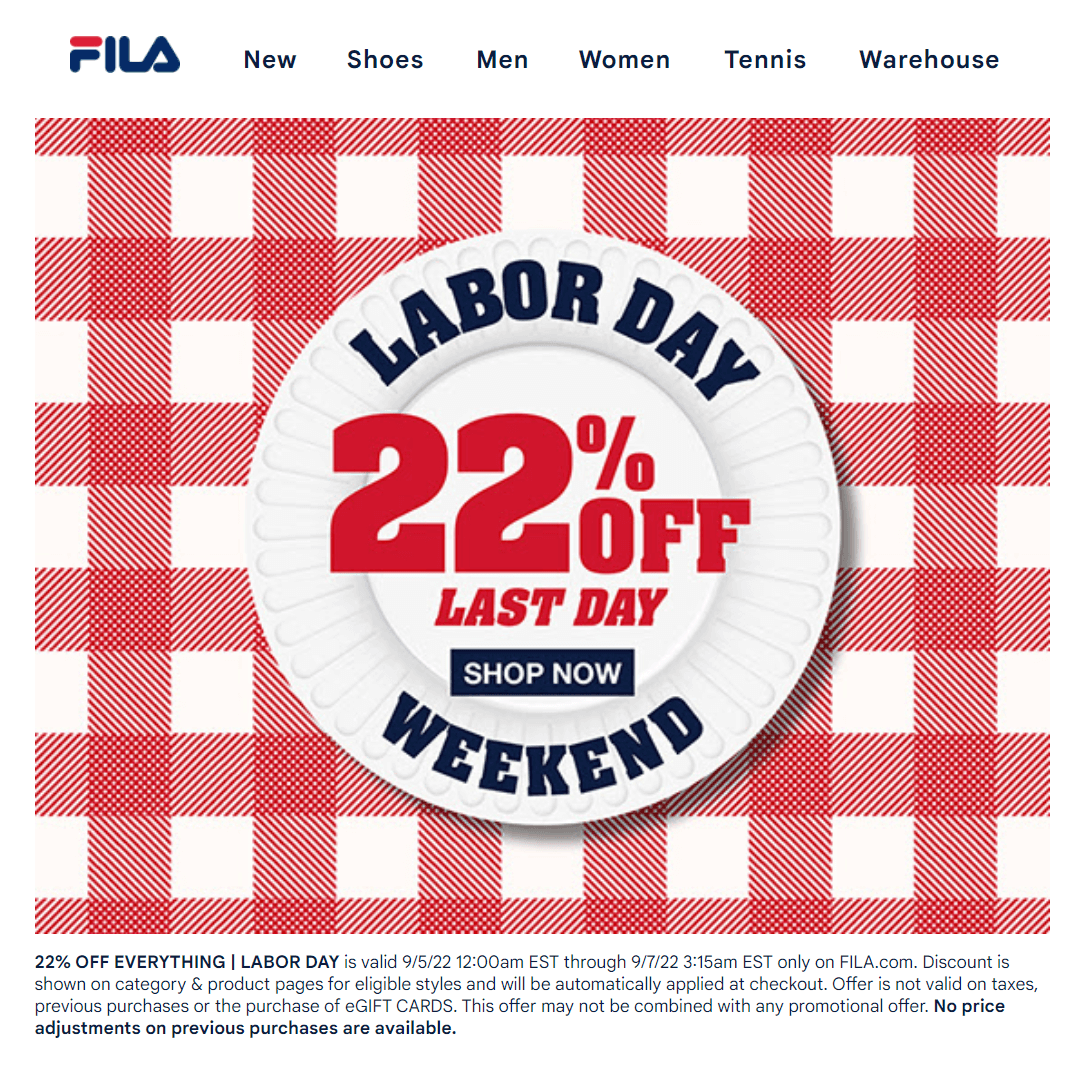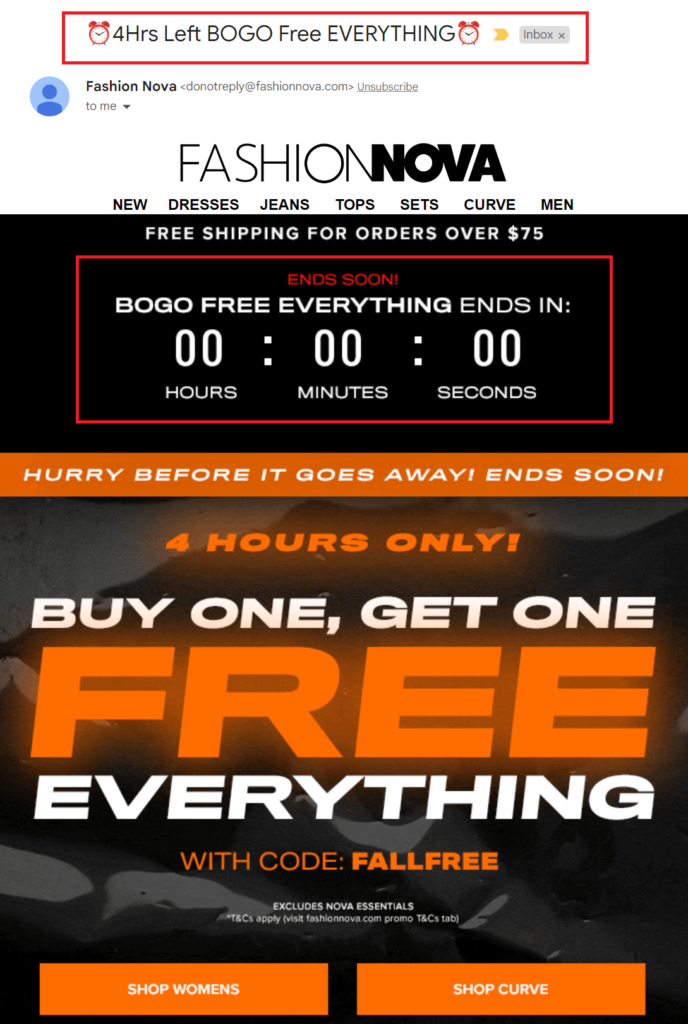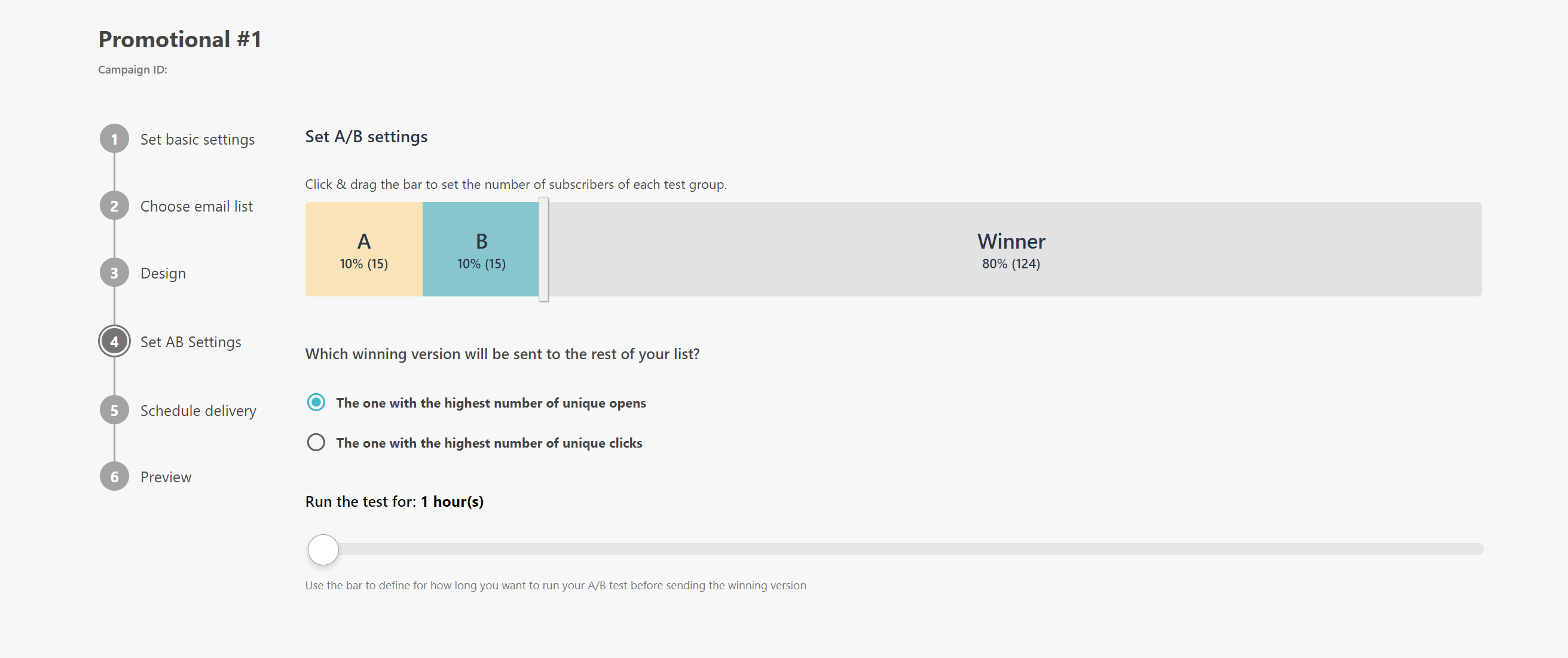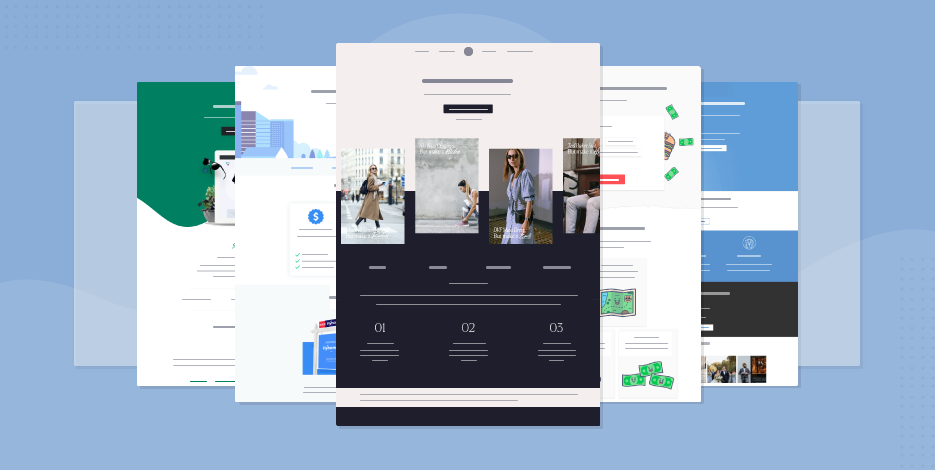
AB Testing Emails: The Ultimate Guide For Conversions [2025]
Without a/b testing, marketers wouldn’t be able to craft high-converting email marketing campaigns and landing pages.
In essence, without experimentation, marketers would be simply “guessing” what works and what doesn’t, instead of collecting actionable data about what yields better results.
In this guide, you’ll learn how to conduct the whole a/b testing process in order to skyrocket the effectiveness of your email marketing campaigns!
What Is A/B Testing In Email Marketing?
Email A/B testing, also known as split testing, is the practice of comparing two different versions of an email and establishing which one performs better. These two versions are sent to two segments of an email list. The version that yields higher open rates or better click-through rates (aka the “winning version”) is then delivered to the rest of your email subscribers.
Why Is Email A/B Testing Essential?
Some businesses are completely ignoring A/B testing, while in reality, it can be extremely valuable since different audiences behave differently. Something that works well for one company might not be ideal for another company.
A/B testing mitigates this problem and enables brands to identify (based on data) what works best for their audience and how to improve their email marketing campaigns. What’s more, these tests are low cost so they don’t influence the company budget, but they can offer a high reward to businesses.
Here are some of the top benefits of applying A/B testing in your email marketing strategy:
- Increase open rates: A/B testing your email subject lines can help your brand increase your email open rates. This is because subject lines (along with the preview text) are probably the only factor affecting the possibility of an email being opened or not. Creating two or more different subject lines and A/B testing them with your audience will show you what resonates with them and how to optimize your marketing messages.
- Boost the conversion rate: By A/B testing your email design or email content you can improve your conversion rates. Ecommerce businesses, for example, can benefit greatly by a/b testing their calls-to-action to find out which button makes people more eager to click.
What Email Components Can You A/B Test?
There are various different elements in an email campaign that you could test in order to improve your marketing results. Let’s explore them one by one:
How to A/B Test Email Subject Lines
As we said before, subject lines can be the deciding element of a winning email campaign. In fact, we believe that subject lines are the starting point in optimizing your emails. Here are a few ideas to start a/b testing your brand’s subject lines:
1. Optimize the length
The ideal length of email subject lines is a much-debated topic among marketers. And while the optimal length is claimed to be between 60 to 70 characters, each audience works differently so we definitely advise you to put that to the test.
As we’re speaking more and more people are checking their emails on mobile devices, thus the need to find out whether your target audience receives and checks your marketing messages on a mobile device or a computer. Mobile devices can show fewer characters of the subject line, so a short one would be a better fit.
2. Apply personalization
Incorporating your subscribers’ names in the subject line can potentially boost your email open rates. Personalization of every form is an effective tactic in digital marketing but it shouldn’t be used blindly.
According to Moosend’s internal research, leveraging the subscriber’s name in the subject line leads to increased opens by nearly 10%. This is very encouraging since it means that your marketing messages (sales, promotions, etc.) could be getting significantly more exposure.
What’s more, such email personalization doesn’t need to be done manually. The top email marketing services such as Moosend and Mailchimp feature personalization tags that you can use to dynamically insert the name of your subscribers in the email subject line.
Remember that personalizing your subject lines is best used in case you want immediate action or you need maximum exposure when you’re launching something new.
3. Add emojis
Emojis have the power to attract the reader’s attention. Imagine an inbox crowded with marketing messages and your subject line having an emoji. It’s surely going to stand out.

However, studies have shown that emojis can either make or break your subject lines. Therefore, it is essential to conduct a/b testing and create different versions of your email subject line.
Generally, the emoji you’ll use must match the content of your campaign or accompany the overall message of your subject line.
What’s more, emojis are usually appreciated by younger generations. Some brands also stick to certain emojis so that their audience feels familiar whenever they see them.
4. Experiment with word order
Placing words in a certain order affects the way people perceive the message and interpret it. This has a direct impact on your email open rate. Let’s take the example below:
- 20% off your new wardrobe using discount code “WINTER”
- Use discount code “WINTER” for 20% off your new wardrobe
In version A of the subject line, the emphasis is on the value the user gets. The first thing they see is the amount of discount they will enjoy. In version B, the benefit comes second.
English-speaking subscribers read left to right, so it might be better to place the value at the beginning of the sentence. In any case, A/B testing will reveal if you can see a boost in metrics.
5. Leverage capitalization
Capital letters surely do grab the reader’s attention. Choosing to capitalize powerful words or simply words you want to emphasize can influence the reader into opening the email.
Capitalization can also increase the FOMO feeling in a subject line. Here is a prime example from FILA:
- 22% OFF EVERYTHING, and YES Extra 22% OFF WAREHOUSE!

However, capital letters may also lead to potential “problems.” Your email may trigger spam traps and be flagged as spam. This could hurt your email deliverability as well as conversion rates.
6. Add urgency
If you want to tempt your subscribers to take a certain action fast, you can add urgency to your message. Specifying for how many hours, days, etc a certain promotion lasts is only one example.
This strategy works particularly well by including a countdown timer inside your email campaign too. You can do this effortlessly with Moosend by drag-and-dropping the “Timer” item into the body of your email. Here is an example from Fashion Nova:

How to A/B Test the From name
The sender name or from name is equally important as the subject line. If you have built a strong relationship with your audience, chances are higher that they will read your emails just by noticing they’re from you. But that’s not always easy to do.
The first thing you should A/B test is whether it’s better to use a real person’s name or the company name as the sender name.
In the case of bloggers, if your name is your brand, you should test whether using your first name or your entire name works better. Your A/B testing results will illuminate that.
How to A/B Test Email Content
Moving on to the inside of an email campaign, there are again several things to consider a/b testing in order to find the winning combination.
1. Change the email copy
People have arguable a short attention span. As a result, you have to experiment with whether your campaign is better with short copy or a longer version.
Sometimes it may be hard to explain what you want in just a few words. But longer copy could disinterest users or discourage them from reading it. A/B testing will reveal if there are statistically significant results.
Remember to A/B test your headlines since they are easy to spot and carry the main message of your campaigns.
2. Make changes to your CTA
CTAs are the “gateways” that lead users to conversion. So, it’s only natural for businesses to A/B test their calls-to-action in order to increase clicks and conversions.
Below are some of the most important variables to test in your CTAs:
- Text on buttons
- Different colors for your CTA buttons
- The size and font and even consider using ALL CAPS
- CTA placement (above the fold, middle, bottom)
- Use arrows (→) or other visual elements to further guide the reader
- One CTA vs Multiple CTAs or Repeated
- Button vs Text
Note: It’s important to test one thing at a time!
3. Experiment with different visuals
Visuals are powerful means that can convince subscribers to act or drive more engagement. Sometimes they can also trigger a subconscious emotion in people and influence their decision.
What’s more, visuals help brands use fewer words and convey their message faster and more efficiently.
Let’s see some ideas regarding A/B testing of visuals:
- Use an animated GIF vs a static image
- Text on the image vs no text on it
- Add an infographic or not
- Images of the product alone vs with people using it
- Colorful visuals that attract attention vs neutral colors
- One visual vs multiple ones
How to A/B Test Design
Another aspect of your emails that you can test is the email design. Through your email marketing service, you can create two different designs for a test campaign and see which one resonated better.
Alternatively, you can experiment with different email templates and establish which one yields better results. This will also help you structure your automation sequences based on what works well with your audience.
Fortunately, most email marketing platforms out there offer various templates to start with, while you can also create a custom one yourself.
How to A/B Test Send time
Last but not least, you can optimize your send time via A/B testing. Unfortunately, this requires some “manual” effort as you need to look at the metrics of your email marketing campaigns. The more data you have, the more educated your decision will be.
Remember to experiment as much as possible to establish the ideal sending times for your business.
In case you want to know what our research showed regarding the best time to send an email, the results suggest that between 9 to 11 is the most suitable time.
How To Set Up An Email A/B Test
In the previous section, we looked thoroughly at what aspects of an email can be A/B tested. Here we’ll be looking at the steps you need to take to conduct a successful A/B test.
#1 Have a clear hypothesis
To ensure you’ll be running an A/B test that’s worth the time and effort, you need to have a clear hypothesis before you start testing. This means that you need to have a strategic hypothesis about why a certain variation of your email campaign will perform better than the other.
For example, you may say that using red color for your CTA instead of blue will catch the readers’ eye easier and it will be immediately noticeable, thus having a bigger impact on your click-through rates. Alternatively, you may say that using a CTA button instead of a plain text hyperlink will stand out more in the email.
Such statements make seem simple at first glance, but they are very important since they allow you to define what you’re going to test and what you aim to achieve from it.
#2 Determine the variable you will test
The next step is to determine which variable you’ll be testing.
To be able to evaluate how effective a change is in your test, you need to select only one variable at a time. If you change more than one thing, you won’t know what affected your results.
For instance, if you are comparing two different subject lines, you have to keep the preview text from name and send time the same.
Of course, you can test more than one variable in an email, just don’t forget to test them one at a time.
Note: You may be surprised to know that even simple changes (like changing the image of your email) can yield big improvements. Other big changes may be harder to measure.
#3 Decide on the sample size and test duration
After you’ve determined the variable you’ll test, it’s time to decide how many people will receive your test campaigns.
We advise you to stick to the 80/20 rule (known as the Pareto principle). In case you’re using Moosend, this will be the default sample size.

In A/B testing terms, you’ll be sending one variant of your email to 10% of the people, and the other to the other 10%. The winning variant will then be sent to the remaining 80% of subscribers in your list.
It goes without saying that the bigger the email list is the more statistically significant and accurate results you’ll get. If you have a small email list (e.g. under 1000 subscribers) you can increase the sample size to ensure you have accurate data about which variant works better.
As you can see, your email marketing platform will also ask you the criteria which will decide the winning variant. Depending on the goal/hypothesis you set at the beginning, you choose the relevant option (e.g. send the winning version based on opens or clicks).
Now you’ll need to decide how long the test will run. Research suggests that running the test for 2 hours results in 80% accuracy. However, the more hours you dedicate to the test, the higher accuracy you’ll have.
Keep in mind that if you’re testing your newsletter on active subscribers, the test duration can be shortened.
#4 Schedule delivery
Here we have a small but highly important detail. As you may be guessing, the winning variation of your campaign is automatically sent to the remaining subscribers as soon as the test ends.
Therefore, you need to adjust your delivery time in order to ensure maximum results.

Let’s say you want the winning variation to arrive at 10 in the morning, you should schedule the test to start at 8.
#5 Run the test and analyze the results
You’re ready to run your A/B test. You can preview your campaign one last time before sending and hit the send button.
And then you wait. After some time, you’ll have enough data about the performance of your campaign. You can see the metrics you want through the dashboard of your email marketing platform.
It’s important to identify patterns and understand what works for your audience so you can optimize your email marketing strategy even further with each test.
Get Started Today
As you have seen, A/B testing is not difficult and without it, a business cannot improve its email marketing campaigns. This means that if you’re not testing, you could be losing money no matter the campaigns you send (promotional, transactional, newsletters, etc).
The only challenge you face is getting started! The knowledge you can acquire through a/b testing your emails is endless.
If you want a platform to start A/B testing your campaigns and have all the tools you need to grow your business, sign up for a free Moosend account and reap the benefits today!





 Published by
Published by
